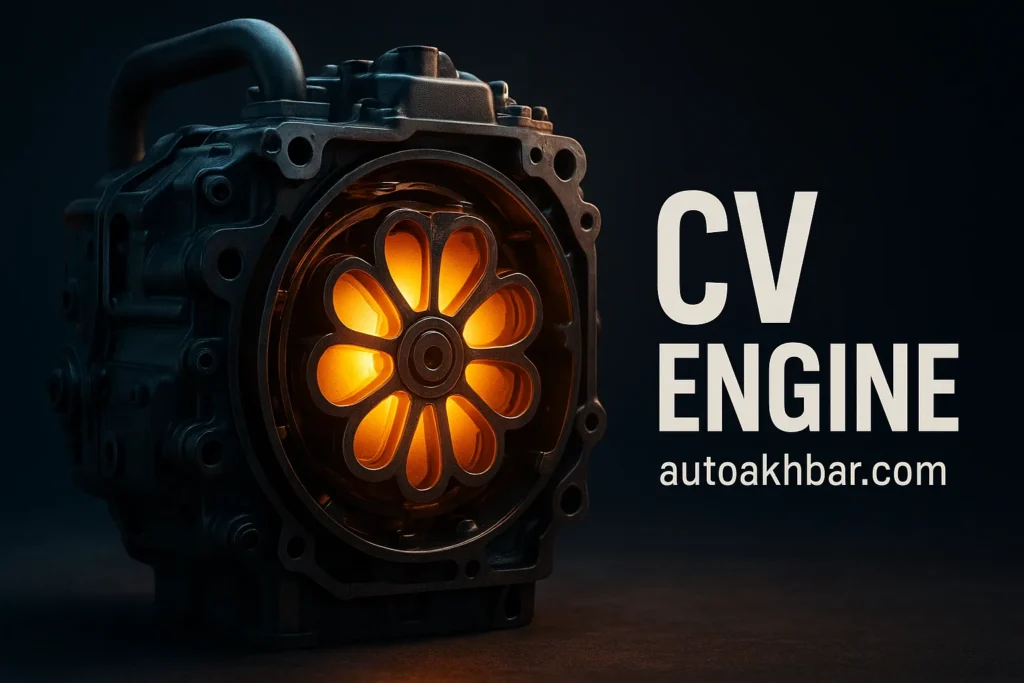If you ever wished petrol cars never died and electric cars didn’t become the future, this one’s for you. Because something unbelievable has happened — right here in India.
Yes, India has just built something that could single-handedly challenge the entire EV revolution — a new type of engine called the CV Engine (Continuous Velocity Engine) developed by Aharavat Technologies in collaboration with CV Technologies.
Let’s break down what makes this engine so revolutionary and why people are calling it “The Flower Engine” of the future.

Table of Contents
🔧 The Problem With Our Current Engines
Internal combustion engines (ICE) have been around for over 230 years. Over that time, they’ve evolved dramatically — but two massive problems still haunt them:
- Emissions – Every running engine releases harmful gases.
- Energy Inefficiency – Around 70-80% of the fuel we burn is wasted as heat or exhaust.
Even after centuries of upgrades, those issues never truly vanished.
🌸 Enter the CV Engine – The “Flower” Revolution
Now comes the CV Engine (Continuous Velocity Engine) — a totally new design that removes the crankshaft entirely.
Instead of a crank, it uses a raw rack and power shaft system — a unique flower-shaped internal structure that has already earned it the nickname “The Flower Engine.”
Here’s what makes it special:
- Up to 90% stroke power efficiency
- 71% lower emissions
- Half the size of a normal engine
- 40% more torque
- 58% more power output
That’s not a small upgrade — that’s a complete rewrite of how engines can perform.
₹34,000 Electric Scooter That Needs No License or Registration?
⚙️ How Does It Work?
Traditional engines rely on connecting rods and crankshafts — which waste torque when the piston reaches the top dead center (TDC).
In fact, around 40% of torque is lost right there.
But in the CV Engine, pistons move horizontally and directly drive a rotating flower-shaped disc through guided pins and teeth alignment.
This means:
- No crank losses
- No connecting rods
- Perfect linear-to-rotational motion conversion
- Smooth, compact, and highly efficient power output
The result? More power, less pollution, and drastically lower fuel consumption.
🚗 Power Example
Aharavat gave a mind-blowing example:
| Comparison | Normal Engine | CV Engine |
|---|---|---|
| Displacement | 2500cc | 450cc |
| Power | 170 HP | 193 HP |
| RPM | Full | Half |
| Fuel Used | 100% | 42% |
| Emission | High | Extremely Low |
So a 450cc CV engine can generate 193 horsepower — something that normally requires a 2.5L petrol engine. Unreal, right?
⚡ Hybrid-Ready & Fuel Flexible
Another genius detail — the CV engine’s power shaft is hollow, allowing an electric motor to mount directly behind it.
That makes it a natural hybrid system, combining petrol + electric seamlessly.
Supported fuels include:
- Petrol
- CNG
- Ethanol
- Hydrogen
Since it’s a high-compression engine, cleaner fuels like ethanol and hydrogen work best — making it future-proof against emission norms.
🧠 Use Cases & Future Potential
The flexibility of this engine opens insane possibilities:
- Dual-engine setups for trucks — one small, one big.
- Use both for heavy loads.
- Turn off the big one on highways for huge fuel savings.
- Two-wheeler & three-wheeler applications are already in development by Aharavat.
- Hybrid or hydrogen engines could soon replace full EV systems.
If successful, India could lead the next global engine revolution, not just follow it.
⚠️ Current Challenges
No tech is flawless. The CV engine still faces some issues:
- The toothed alignment mechanism can misalign under extreme load or rough use.
- The mass-production challenge — precision components aren’t cheap.
But Aharavat says they’re already testing upgrades to fix both issues.
Final Verdict: India’s Comeback Against EVs
For decades, EVs have been pitched as the “only” future. But the CV Engine proves that innovation in internal combustion isn’t dead yet.
If Aharavat pulls this off, it could mean:
✅ Petrol engines that emit 70% less pollution.
✅ 58% more power and torque.
✅ 50% smaller, cheaper, and lighter engines.
✅ Hybrid compatibility without major redesign.
Maybe — just maybe — EVs won’t be the only future.
FAQ CV Engine
Who developed the CV Engine?
Aharavat Technologies in partnership with CV Technologies, both India-based firms.
Why is it called the Flower Engine?
Because of its internal rotating disc design resembling a flower pattern.
How much more efficient is it than a normal petrol engine?
Up to 58% more power output and 71% less emissions.
Can it run on multiple fuels?
Yes — petrol, CNG, ethanol, and hydrogen.
When will it come to market?
Initial versions are being tested for two-wheelers and three-wheelers, likely in the next few years.